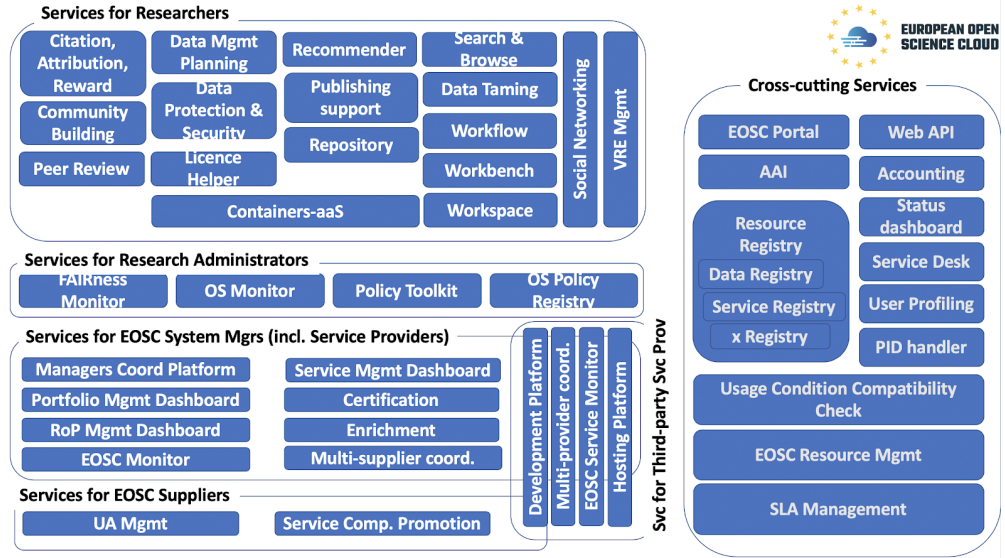
Pioneering Blueprint Delivered for EOSC Service Architecture
With the European Open Science Cloud (EOSC) to be defined by the services that it will deliver, EOSCpilot ensures its success by delivering a blueprint for the EOSC service architecture in its latest published report.
EOSCpilot's Deliverable 5.4 - Final EOSC Service Architecture (D5.4) is the second and final release of the EOSC Service Architecture by EOSCpilot.
Key features
The blueprint builds upon the foundations defined in the Initial EOSC Service Architecture (deliverable D5.1) for the EOSC IT System.
In particular, the following features characterise the EOSC System:
- Its functionalities are provisioned as-a-Service, i.e. they are made available by online services operated by providers taking care of the technical and organisational approaches needed to deliver the planned functionalities;
- It is a highly distributed, evolving and heterogeneous hybrid cloud, i.e. it is an evolving mixture of on-premises and off-premises IT resources and organizations mobilized to deliver the envisaged services;
- Its operation and development is regulated by a set of Rules of Participation;
- It is modelled as an open and evolving System of Systems (SoS) where the component systems providing services include existing and emerging Research Infrastructures (including e-Infrastructures) and other types of Service Providers;
- EOSC services provision is based on an open and evolving set of EOSC Nodes spread across several organisations and regions;
- EOSC Services should promote and support FAIRness, e.g. the EOSC Services managing data should implement the FAIR principles.
Variables influencing EOSC's development
The EOSC IT system is a complex and evolving platform expected to start taking its shape in the next few years. Its development will both influence, and be influenced by, several economic and societal forces such as:
• The community uptake both from the consumption and production perspectives;
• The IT services development market;
• The sustainability decisions taken by funders;
• Changes in the research contextual environment (e.g. new metrics for the evaluation of researchers).
Current gaps
In the concluding remarks of the D5.4 is this deliverable determined by noticing that despite the “Minimal Viable Product” assumption taken, if we look at the services that infrastructures can currently make available to EOSC, we see that they do not yet cover the entire spectrum of minimal required functionalities.
Aspects like community building and collaboration, recommendation, reward and attribution and many others related to the new open science vision are not yet on the radar of major e-Infrastructures or of the thematic Research Infrastructures.
This gap is expected to be progressively filled in the coming years. Moreover, it is already anticipated that the EOSC services will largely change to reflect the evolving rules, policies and practices that the implementation of the Open Science vision will put in place.
As in any ecosystem, in order to obtain a good quality and sustainable system this change will have to be open to competition. Multiple providers will have the opportunity to offer their services and their resources and the “market” of researchers and other users will decide those that will survive and progress.
These considerations delineate a rapidly evolving landscape to which e-Infrastructures and Research Infrastructures will be required to promptly respond. This will also open a new market and a variety of new opportunities to third-party service providers.
